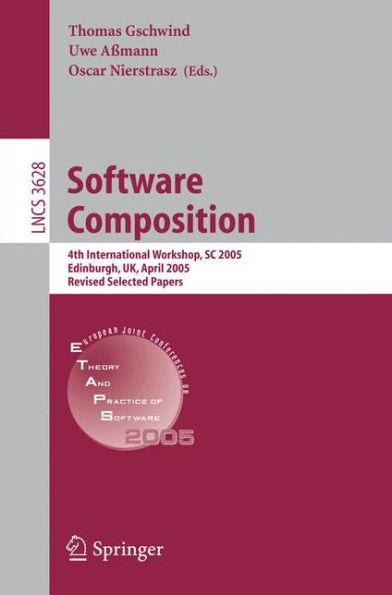Software Composition: 4th International Workshop, SC 2005, Edinburgh, UK, April 9, 2005, Revised Selected Papers
Component-based software development is the next step after object-oriented programmingthatpromisesto reduce complexity and improve reusability. These advantages have also been identified by the industry, and consequently, over the past years, a large number of component-based techniques and processes have been adopted in many of these organizations. A visible result of this is the number ofcomponentmodels that have been developed and standardized. These models define how individual software components interact with each other and simplify the design process of software systems by allowing developers to choose from previously existing components. The development of component models is a first step in the right direction, but there are many challenges that cannot be solved by the development of a new component model alone. Such challengesare the adaptation of components, and their development and verification. Software Composition is the premiere workshop to advance the research in component-based software engineering and its related fields. SC 2005 was the fourth workshop in this series. As in previous years, SC 2005 was organized as an event co-located with the ETAPS conference. This year’s program consisted of a keynote on the revival of dynamic l- guages given by Prof. Oscar Nierstrasz and 13 technical paper presentations (9 full and 4 short papers). The technical papers were carefully selected from a total of 41 submitted papers. Each paper was thoroughly peer reviewed by at leastthreemembers of theprogram committee andconsensusonacceptancewas achieved by means of an electronic PC discussion. This LNCS volume contains the revised versions of the papers presented at SC 2005.
1111355040
Software Composition: 4th International Workshop, SC 2005, Edinburgh, UK, April 9, 2005, Revised Selected Papers
Component-based software development is the next step after object-oriented programmingthatpromisesto reduce complexity and improve reusability. These advantages have also been identified by the industry, and consequently, over the past years, a large number of component-based techniques and processes have been adopted in many of these organizations. A visible result of this is the number ofcomponentmodels that have been developed and standardized. These models define how individual software components interact with each other and simplify the design process of software systems by allowing developers to choose from previously existing components. The development of component models is a first step in the right direction, but there are many challenges that cannot be solved by the development of a new component model alone. Such challengesare the adaptation of components, and their development and verification. Software Composition is the premiere workshop to advance the research in component-based software engineering and its related fields. SC 2005 was the fourth workshop in this series. As in previous years, SC 2005 was organized as an event co-located with the ETAPS conference. This year’s program consisted of a keynote on the revival of dynamic l- guages given by Prof. Oscar Nierstrasz and 13 technical paper presentations (9 full and 4 short papers). The technical papers were carefully selected from a total of 41 submitted papers. Each paper was thoroughly peer reviewed by at leastthreemembers of theprogram committee andconsensusonacceptancewas achieved by means of an electronic PC discussion. This LNCS volume contains the revised versions of the papers presented at SC 2005.
54.99
In Stock
5
1

Software Composition: 4th International Workshop, SC 2005, Edinburgh, UK, April 9, 2005, Revised Selected Papers
202
Software Composition: 4th International Workshop, SC 2005, Edinburgh, UK, April 9, 2005, Revised Selected Papers
202Paperback(2005)
$54.99
54.99
In Stock

Product Details
| ISBN-13: | 9783540287483 |
|---|---|
| Publisher: | Springer Berlin Heidelberg |
| Publication date: | 10/06/2005 |
| Series: | Lecture Notes in Computer Science , #3628 |
| Edition description: | 2005 |
| Pages: | 202 |
| Product dimensions: | 5.98(w) x 9.02(h) x 0.36(d) |
From the B&N Reads Blog
